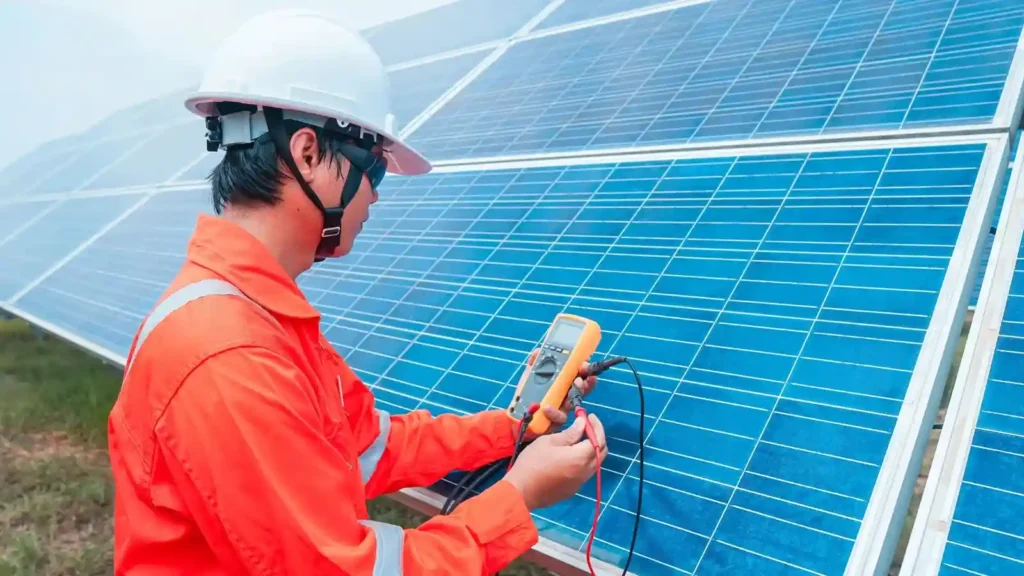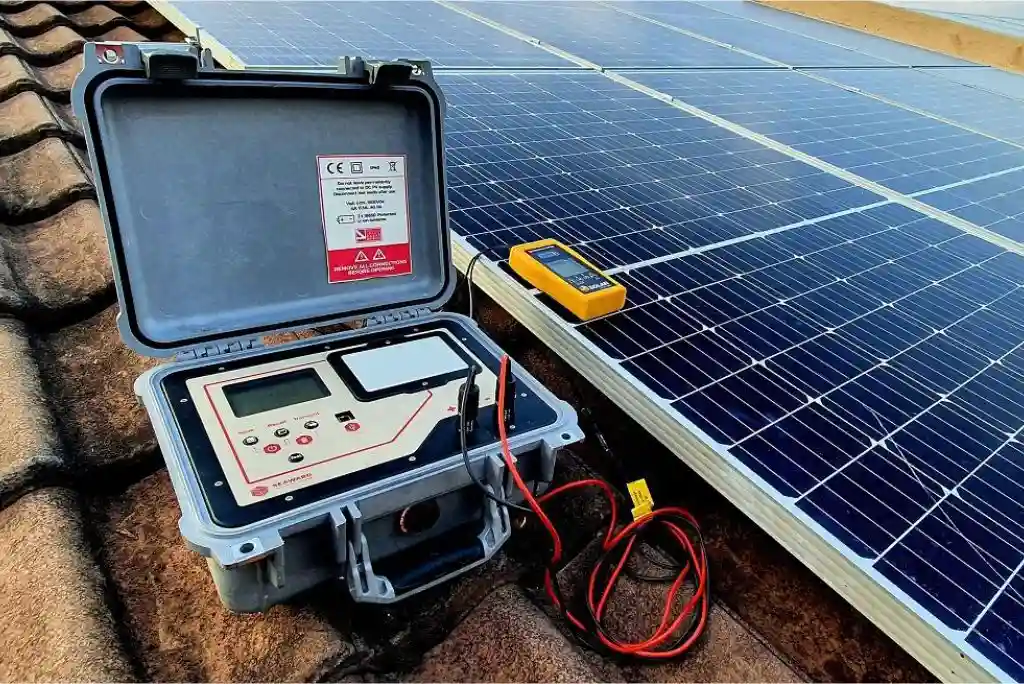How to Test Solar Panel Wattage?
With the increasing adoption of solar energy in Pakistan, understanding how to accurately test your solar panel’s wattage is essential.
Proper testing ensures optimal performance, maximizes return on investment, and supports a sustainable energy future. At Implecso, we believe in empowering homeowners and businesses with the knowledge to make smart solar decisions.

What is Solar Panel Wattage?
Solar panel wattage refers to the maximum power output a panel can generate under standard test conditions (STC), typically 1,000 watts per square meter of solar irradiance at a cell temperature of 25°C. This rating, often listed as “Wp” (watt-peak), indicates the panel’s electricity production capacity under ideal conditions.
Tools Required for Testing
To test solar panel wattage accurately, you’ll need:
- Digital Multimeter – to measure voltage (V) and current (A)
- Protective Gear – insulated gloves and safety glasses
- Direct Sunlight – testing must be done under bright, sunny conditions for accurate results
Step-by-Step Testing Procedure

1. Inspect the Panel Label
Look for the specification label on the back of your solar panel. It usually includes:
- Open-Circuit Voltage (Voc)
- Short-Circuit Current (Isc)
- Maximum Power Voltage (Vmp)
- Maximum Power Current (Imp)
- Rated Wattage (Wp)
These values provide the expected electrical output under ideal conditions.
2. Measure Open-Circuit Voltage (Voc)
- Set your digital multimeter to DC voltage mode.
- Connect the red lead to the positive terminal and the black lead to the negative.
- Record the voltage shown. This is your open-circuit voltage (Voc).
3. Measure Short-Circuit Current (Isc)
- Change your multimeter setting to DC current mode.
- Carefully connect the leads to the same terminals.
- Record the current value. This is your short-circuit current (Isc).
Safety Note: Be cautious when testing current. Always follow safety procedures to prevent electrical shock.
4. Calculate Solar Panel Wattage
Use the formula:
Wattage (W) = Voltage (V) × Current (A)
Example: If your Voc is 20V and Isc is 5A, the wattage is:
20V × 5A = 100W
This represents the panel’s theoretical power output under current conditions.
Factors Affecting Solar Panel Wattage in Pakistan
1. Sunlight Intensity
Pakistan has strong solar potential. Regions like Balochistan and Sindh experience higher irradiance levels, while areas like Gilgit-Baltistan have relatively lower exposure.
Peak sun hours in Pakistan generally range from 4 to 6 hours per day, directly impacting wattage output.
2. Temperature Impact
High temperatures can reduce solar panel efficiency. Every degree rise above 25°C can decrease output by approximately 0.5%. To offset this, ensure proper ventilation and panel spacing during installation.
3. Orientation and Tilt
For optimal results in Pakistan:
- Orientation: Face panels toward the South.
- Tilt Angle: Should match the latitude of your location (e.g., 33° for Islamabad).
Correct panel positioning significantly improves energy output.
4. Dust and Pollution
Dust buildup can reduce efficiency by up to 20%. This is particularly relevant in arid regions. Regular cleaning and maintenance are essential to maintain high performance.
Estimating Daily Solar Output
You can estimate your daily energy production using this formula:
Daily Output (Wh) = Panel Wattage × Peak Sun Hours × System Efficiency
Example:
- Rated Power: 300W
- Peak Sun Hours: 5
- System Efficiency: 80% (0.8)
300W × 5 × 0.8 = 1,200Wh or 1.2kWh per day
This calculation helps determine if your system can meet your household’s energy needs.
Additional Tips
- Monitor Regularly: Track your solar system’s output monthly.
- Hire Professionals: For accurate testing, consider consulting a certified solar technician.
- Invest in Quality Equipment: Use reputable brands for better reliability and performance.
Conclusion
Testing your solar panel wattage is a critical part of solar maintenance, especially in a country like Pakistan where climate, dust, and sunlight conditions vary regionally. By following these steps and understanding the influencing factors, you can ensure your solar system delivers maximum efficiency and value over time.
